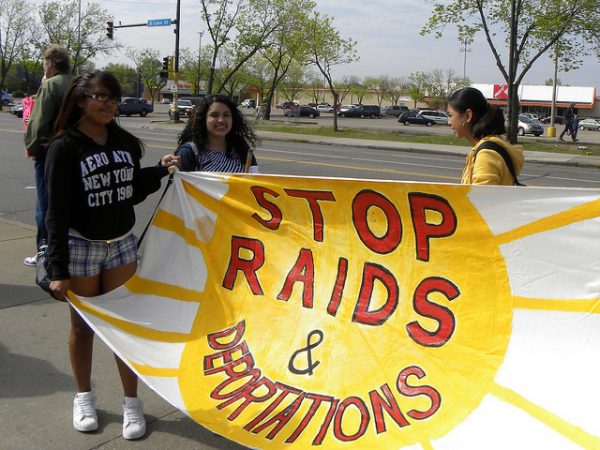
In response to the Trump administration’s crackdown on undocumented immigrants, cities and universities all across the United States have declared themselves “sanctuaries” from the threat of deportation. One aspect of this has been a revival of the sanctuary church movement. Over 800 churches nationwide have declared themselves sanctuaries for undocumented immigrants who fear deportation since Trump took office. While it is technically illegal to harbor undocumented immigrants, immigration enforcement officials have typically avoided raiding “sensitive locations” like churches and hospitals to avoid disrupting institutions that provide social services. Social science shows that protecting sensitive locations like churches is key to providing essential social services to marginalized populations.
This is not the first instance of religious institutions attempting to shield undocumented immigrants from deportation on moral grounds in the United States. In the 1980s, thousands of refugees fled political violence in Central America, many to the border states of Arizona and Texas. In response, hundreds of religious congregations declared themselves to be sanctuaries for Central American refugees. With the exception of a notable trial in Arizona in 1986 in which several activists were convicted for violating immigration law, most congregations suffered minimal, if any, legal reprisal for their efforts during this period.
- Christian Smith. 1996. Resisting Reagan: The U.S. Central American Peace Movement. University of Chicago Press.
- Gregory L. Wiltfang and Doug McAdam. 1991. “The Costs and Risks of Social Activism: A Study of Sanctuary Movement Activism.” Social Forces 69(4): 987-1010.
Churches are unique from other types of sensitive locations like schools and hospitals because of their long history of offering sanctuary to people in need, a history that goes back to the 1600s. It was not until the late 20th century that states began intervening and requiring churches to hand over people they were protecting. In the U.S. today, churches are a critical resource for low-income, minority, and immigrant communities, especially in small towns and rural areas. They often serve as primary distribution sites for a number of rural social services including food aid, shelter, clothing, basic healthcare, and English language and employment tutoring.
- Philip Marfleet. 2011. “Understanding ‘Sanctuary’: Faith and Traditions of Asylum.” Journal of Refugee Studies 24(3): 440-455.
- Mark Chaves and William Tsitsos. 2001. “Congregations and Social Services: What They Do, How They Do It, and With Whom.” Nonprofit and Voluntary Sector Quarterly 30(4).
- Stephanie C. Boddie. 2002. “Fruitful Partnerships in a Rural African American Community: Important Lessons for Faith-Based Initiatives.” The Journal of Applied Behavioral Science 38(3).
Research studying the long-term effects of ICE raids on hospitals and clinics shows that immigrants stop seeking medical services when they no longer feel safe from law enforcement. If sanctuary churches are no longer recognized as safe from ICE raids, there is some concern that the same problem will make it difficult for churches to reach immigrants in rural places.
- Mark Berk and Claudia Schur. 2001. “The Effect of Fear on Access to Care Among Undocumented Latino Immigrants.” Journal of Immigrant and Minority Health 3(3).
- Karen Hacker et al. 2011. “The Impact of Immigration and Customs Enforcement on Immigrant Health: Perceptions of Immigrants in Everett, Massachusetts, USA.” Social Science Medicine 73(4).
It remains to be seen whether the Trump administration will stay out of churches, but social science shows that raiding these spaces could affect all immigrants, especially those in rural areas. And it may very well ignite an intense reaction from the churches and communities trying to keep people safe.

Comments